The rear-engine Volkswagen Transporter T2 was discontinued in Germany back in 1979. However, in Brazil, production continued until December of last year! I had the opportunity to drive both a German-built classic and a fresh Brazilian version—guess which one was better?
According to legend, the Transporter was invented by Ben Pon. This Dutch car dealer arrived in Wolfsburg in 1946 to negotiate the supply of Beetles and noticed an interesting “technological vehicle”—small carts with a cabin on a Beetle chassis used around the Volkswagen factory. Pon sketched the first design for the van on a Volkswagen chassis: with a cabin at the front, the engine at the rear, and a cargo compartment in between.
The factory leadership liked the idea, as post-war Germany was in desperate need of affordable delivery vehicles. However, the main priority was increasing Beetle production, so work on the van didn’t begin until October 1948. But prototypes were ready a year later. The powertrain and independent torsion suspension were borrowed from the Beetle, but the floor was reinforced, the track widened, and to increase torque (as the base 1.1-liter engine produced only 25 hp), they added wheel reducers from the military Kübelwagen. The rear of the cargo compartment featured a large hump, hiding the engine, so wide swing-out doors were added for easier loading and unloading. Early models had a solid rear wall, with a hatch added in 1955.

More than 11.5 million Transporters of five generations have already been produced, and the long-lived T2 was expectedly the most widespread. At first, the vehicles were assembled in Wolfsburg, at the same plant as the Beetles, but in 1956 a separate plant was launched in Hanover, which remains the home of the Transporters to this day

The interior of the first generation Transporter is holy simplicity: bare metal dashboard, minimum instruments, V-shaped windshield, narrowed front, no heater… But — a radio!
The production model, Transporter Typ 2 (the second model after the Beetle Typ 1), entered production in the fall of 1949 and was known for its thoughtful aerodynamics. After wind tunnel tests at Braunschweig Technical University, the drag coefficient was reduced from an initial 0.74 to 0.44. Following the van, other variants appeared, including the microbus, flatbed truck, double-cab pickup, and even a camper. These 930 kg capacity vehicles were used for delivery services, by the police, in ambulances, and even earned respect among hippies in the U.S. In 1956, Transporter production moved from Wolfsburg to a newly built factory in Hanover, where all subsequent models were manufactured.
In 1967, the second-generation Volkswagen T2 arrived. The dimensions remained almost unchanged, but the vehicle became heavier and more comfortable, with a roomier cabin thanks to a redesigned front body and a more secure interior with plastic parts. The payload increased to 980 kg, and the base 1.6-liter engine now produced 47 hp, eliminating the need for wheel reducers. Finally, the side doors became sliding.

The first generation minibus had a soft roof that folded like an accordion, while the second generation cars could be ordered with a metal hatch that slid back by turning the handle

The “flat” boxer engine is installed in the rear overhang
I began my experience with the microbus through the sliding door. With little effort, I slid it open, and behind the wide opening… Wow, what a platform! There’s no second-row seating in this vehicle—it could be omitted upon purchase. Now, I understand the appeal to hippies: the large, flat platform (no transmission tunnel!) with a neat carpet covering—this is exactly what the “flower children” needed. These children, as we remember, urged everyone to make love, not war.
The rear bench offers limousine-like space, but only for two: the car is narrow, so it’s cramped for three, and there are only two simple lap belts. However, the front seats are equipped with inertial three-point seat belts!
This silver bus is from the German farewell series Silberfisch (Silver Fish) from 1979. Its equipment would make some cars of that era envious: side moldings, a large roof hatch, front disc brakes, fog lights, headlight washers, and a cassette radio. And how thoughtfully German engineers worked on some features! For example, the front doors have ventilation channels that direct air to the rear of the cabin.
The seating position is unmistakably bus-like: a huge, almost horizontal steering wheel and stiff floor pedals, with the accelerator shifted to the right, making the ankle joint quickly tired in this twisted position.
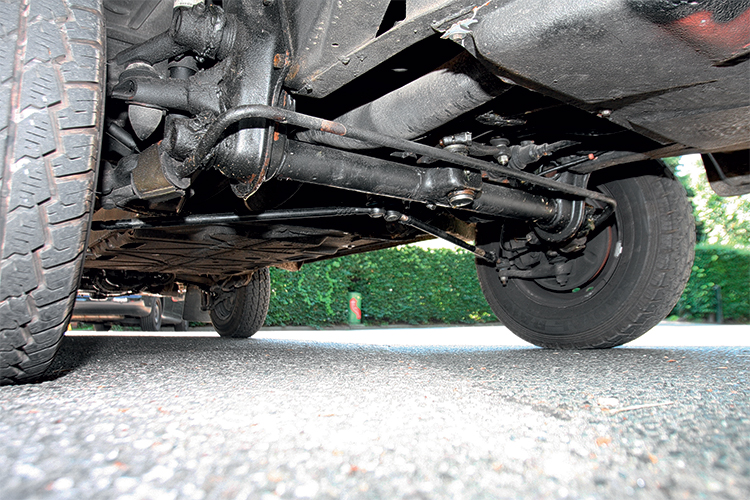
Front suspension of the Transporter: longitudinal levers are connected in pairs to the ends of the torsion bars, placed in two powerful transverse pipes
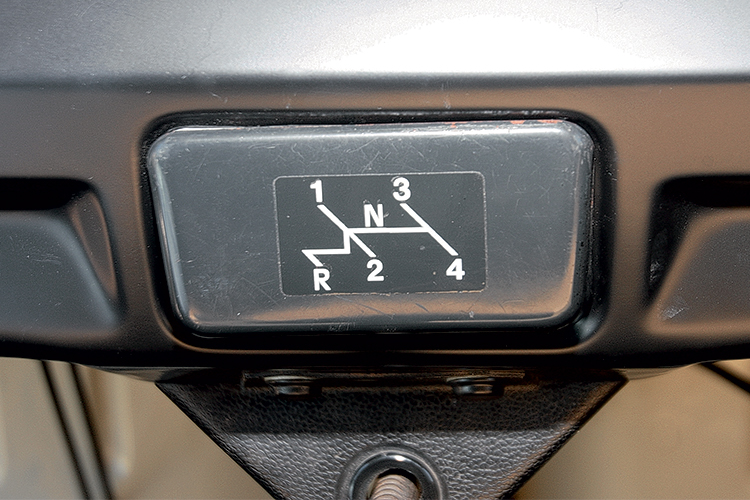
The gear shift pattern is indeed slanted, and coupled with the long lever strokes…
The key is in place, but where is the “choke” lever? It’s absent: this 1970s “workhorse” has an automatic air damper control system, and not just for one, but two Solex carburetors! My version features the largest engine in the family, a 2.0-liter air-cooled flat-four producing 70 hp, though even the more modest versions came with two carburetors.
How smooth and sweet the air-cooled engine sounds. The tone is like that of a Zaporozhets, but with less “iron rawness” in its voice. You don’t hear engines like that anymore. It also doesn’t struggle from the very low revs—peak torque is reached at 2800 rpm. The key is shifting gears on time, which can be a problem: the gear lever of the four-speed “manual” has poor precision because it’s connected to the gearbox by long linkages running under the vehicle almost the entire length of the car. The distance between first and second gear is almost half a meter, and to engage third, you need to push it toward the glove compartment!
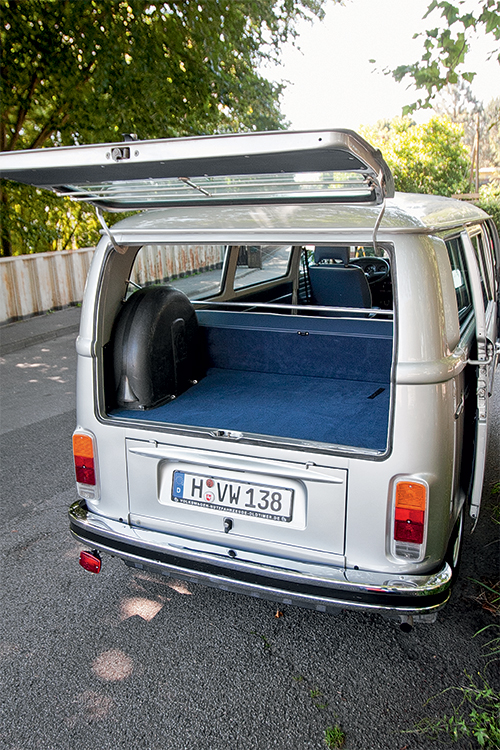
There is a full-fledged trunk above the engine compartment. And if you remove the spare tire and remove the floor panel secured with four wing nuts, the power unit will be in full view
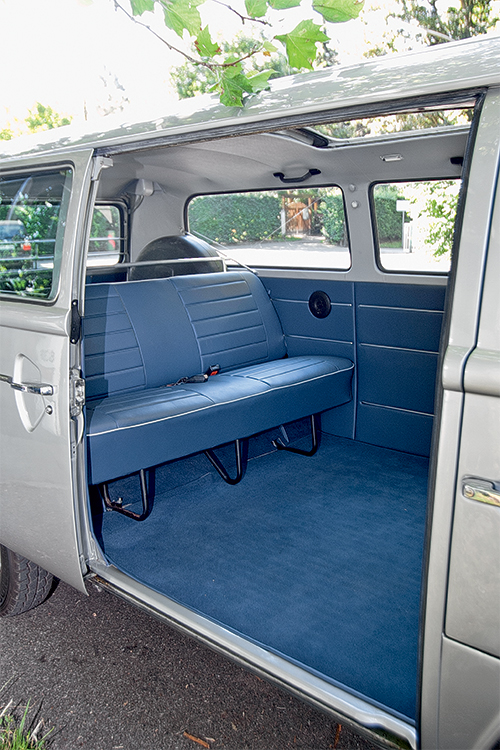
Perfectly flat floor, no threshold, soft sofa – isn’t it a limousine? You could have refused the middle row of seats when buying
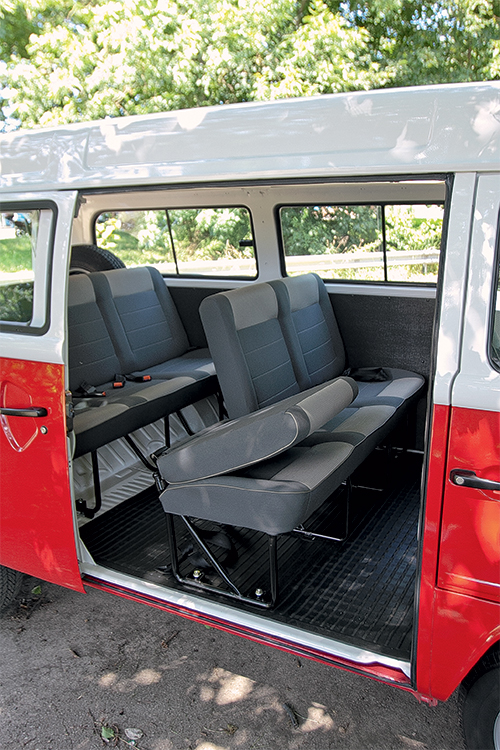
Minibus in Brazilian style. The seats are hard and uncomfortable, the chairs themselves are screwed tightly – to get to the back row, only one section of the middle row back folds down. At least all the windows are sliding
I try not to think about the fact that, in case of an accident, only the thin body wall will protect me. But the visibility is like being in an aquarium, and the steering, with a worm gear mechanism and no power assist, is informative. You have to turn it more than I’m used to since the controlled wheels are not ahead of you but directly under you!
But the main feature of the Volkswagen T2 is the suspension. It’s independent, with transverse torsion bars instead of traditional springs. The ride quality is magical, and the energy absorption is phenomenal! Even over cobblestones, the little bus seems to float, barely noticing seams and cracks on the asphalt… But as speed increases, it begins to wander on the road, and body roll becomes dangerous, making it unpleasant to drive faster than 80-90 km/h.
How does the Brazilian version perform?
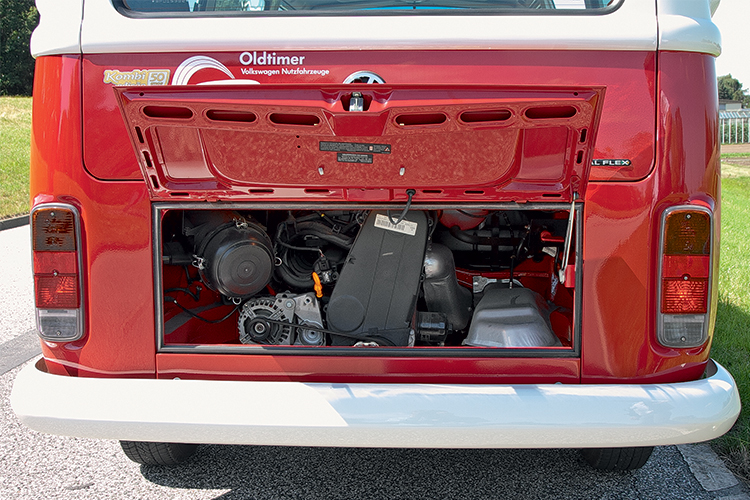
The inline “four” fit into the standard engine compartment at the limit – there is no headroom

The red Brazilian minibus is from the anniversary series dedicated to the 50th anniversary of the T2 model. In 2007, only 50 of these cars were made, this example is number 33
At the factory in São Bernardo do Campo, production of the Transporters began almost simultaneously with Germany—back in 1950. The second-generation vehicles arrived in Mexico in 1971 and five years later in Brazil, where the Latin Americans independently modernized the vehicles. For example, in 1981, Brazilians were the first to install a liquid-cooled engine in the Transporter—a 50-hp 1.6-liter diesel—but this version didn’t sell well and quickly disappeared from the market.
Ten years later, in Mexico, they began producing vans with a liquid-cooled 1.8-liter gasoline engine (71 hp), but the model was discontinued in 1996. The Brazilians held out the longest. Only the introduction of new environmental regulations forced them to give up the air-cooled engine—since December 2005, Brazilian Transporters have been equipped with the inline EA111 engines (1.4 L) with liquid cooling, from the Volkswagen Fox compact hatchback.

The second-generation Volkswagen Transporter has already acquired a plastic front panel, a trauma-safe steering column and a “stove”. In the center under the radio is the parking brake handle. Additional instruments to the left of the steering wheel and a trip master are installed today: this bus often participates in retro rallies
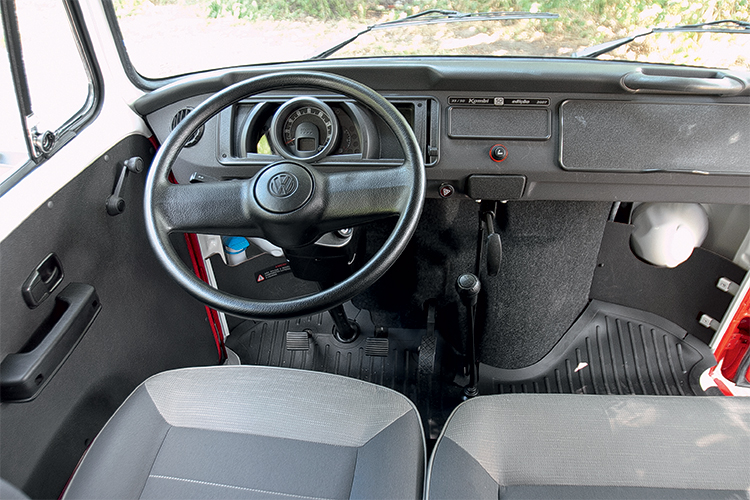
The “Brazilian” interior can hardly be called improved. The number of buttons and switches has been radically sequestered, and a radiator casing for the engine cooling system has grown in front of the feet
Recognizing this version of the Transporter is easy: it features a large plastic grille at the front, behind which sits the radiator. Additionally, the roof is raised by 85 mm. But why such a simple interior? The floor has poor rubber mats, and the sliding door lock is visible. The new instrument cluster has an electronic odometer, but the only indicators are the speedometer and fuel gauge. As for the climate control, there’s just one lonely slider, and at first glance, nothing seems to change when you move it. It turns out that in the hot, sunny Brazil, the Transporter lost not only the heater but also the entire forced ventilation system! Only the incoming airflow remains, and that single slider on the dashboard controls the air vent flap. When you’re driving, there’s ventilation; when you stop, you’re in a “sauna” and have to rely on drafts from the windows. Irony of fate: overheating in traffic is now a concern not for the engine, but for the passengers!
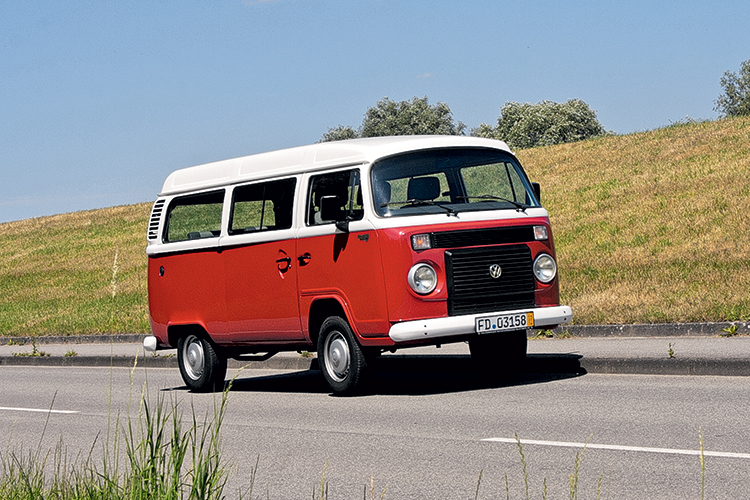
A plastic radiator grille, a raised roof and colourless turn signal lenses are all the external differences between the late Brazilian T2 and the original German cars.
The 1.4-liter fuel-injected engine is nominally more powerful than the two-liter carbureted flat-four (78 vs. 70 hp), but the peak torque is much lower (123 vs. 143 Nm) and is shifted to higher revs. As a result, the Brazilian microbus “doesn’t move” at low speeds. The engine needs to be “revved,” but the sound is far from pleasant, and due to poor soundproofing, it becomes quite intrusive. The gearbox is unchanged, but even less precise than before: did I engage first or third?
The steering still lacks power assist but has become even “looser.” The suspension has not changed in design, but on the same cobblestones, the Brazilian bus rattles and sways from side to side. And the body roll is slightly reduced.
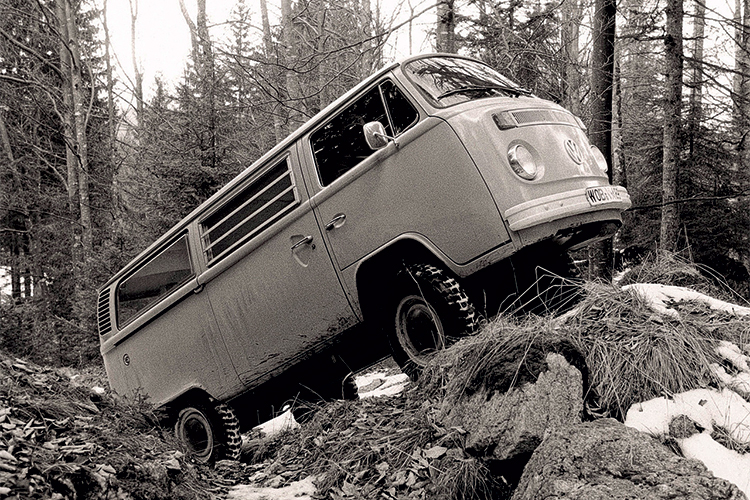
The Volkswagen T2 also managed to “try on” all-wheel drive: in 1975, a group of Volkswagen engineers led by Gustav Maier built five prototypes with an engine from the Volkswagen Iltis SUV, increased ground clearance, rigidly connected front-wheel drive and interwheel limited-slip differentials. During testing, the cars demonstrated enviable cross-country ability, but the company’s management “killed” the project, fearing low sales. The serial Transporter Syncro appeared only in 1985 — already in the T3 family and with a viscous coupling in the front axle drive. However, there was also a version with a forced connection of the front — for the army.
In general, I don’t regret the fact that this mutated Volkswagen T2 was finally discontinued last December. It was discontinued, by the way, not voluntarily: the ancient design no longer met new safety standards. If not for that, the “T2” would have kept going: at a price of around $14,000 (cheaper than a UAZ “Bukhanka”!), it was selling 25,000-30,000 units per year and ranked in the top 40 best-selling models in the Brazilian market. But it’s no longer the charming German bus, but a workhorse with no soul, now equipped with liquid cooling for the engine.
But I will remember the original German Volkswagen T2 with fondness. They really knew how to make them!
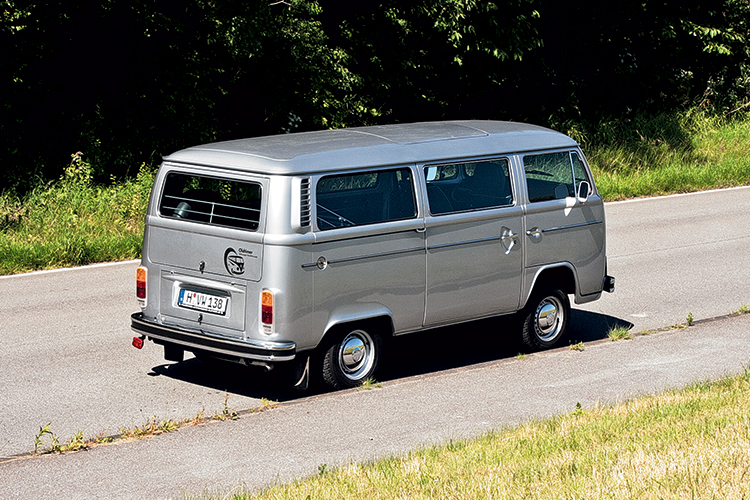
Isn’t it a cutie? Even when the car is stationary, the trim towards the stern is noticeable, and when accelerating, the front wheels are unloaded even more
| Parameter | Volkswagen T2 Kombi (Germany, 1979) | Volkswagen T2 Kombi (Brazil, 2007) |
|---|---|---|
| Body type | Four-door minibus | Four-door minibus |
| Seating capacity | 5 | 9 |
| Dimensions, mm Length Width Height Wheelbase Track (front/rear) | 4505 1720 1955 2400 1385/1426 | 4505 1720 1955 2400 1385/1426 |
| Curb weight, kg | 1180 | 1259 |
| Gross weight, kg | 2250 | 2259 |
| Engine | Gasoline, with dual carburetors | Gasoline, with multi-point injection |
| Engine location | Rear overhang, longitudinal | Rear overhang, longitudinal |
| Cooling system | Air-cooled | Liquid-cooled |
| Number and arrangement of cylinders | 4, flat (opposed) | 4, inline |
| Displacement, cm³ | 1971 | 1390 |
| Cylinder bore/stroke, mm | 94.0/71.0 | 76.5/75.6 |
| Compression ratio | 8.0:1 | 10.5:1 |
| Number of valves | 8 | 8 |
| Max. power, hp/kW/rpm | 70/51.5/4200 | 78/57/4800 (80/59/4800)* |
| Max. torque, Nm/rpm | 143/2800 | 123/3500 (125/3500)* |
| Transmission | Manual, 4-speed | Manual, 4-speed |
| Gear ratios I II III IV Reverse Final drive | 3.80 2.06 1.26 0.82 3.61 5.38 | 3.77 2.06 1.22 0.81 3.28 5.50 |
| Drive type | Rear | Rear |
| Front suspension | Independent, torsion, longitudinal arms | Independent, torsion, longitudinal arms |
| Rear suspension | Independent, torsion, diagonal arms | Independent, torsion, diagonal arms |
| Front brakes | Disc | Disc |
| Rear brakes | Drum | Drum |
| Tires | 185 R14C | 185/80 R14 |
| Max. speed, km/h | 127 | 130 |
| Acceleration 0-100 km/h, s | 17.0 | 16.6 (16.1)* |
| Fuel consumption, L/100 km (combined cycle) | 12.9 | 9.1 (12.8)* |
| Fuel tank capacity, L | 51 | 45 |
| Fuel type | AI-92 gasoline | AI-92 gasoline (ethanol)* |
*Values in parentheses are for ethanol
Photo: Igor Vladimirsky
This is a translation. You can read the original article here: Volkswagen T2 по-немецки и по-бразильски: наш ретротест

Published April 17, 2025 • 20m to read

